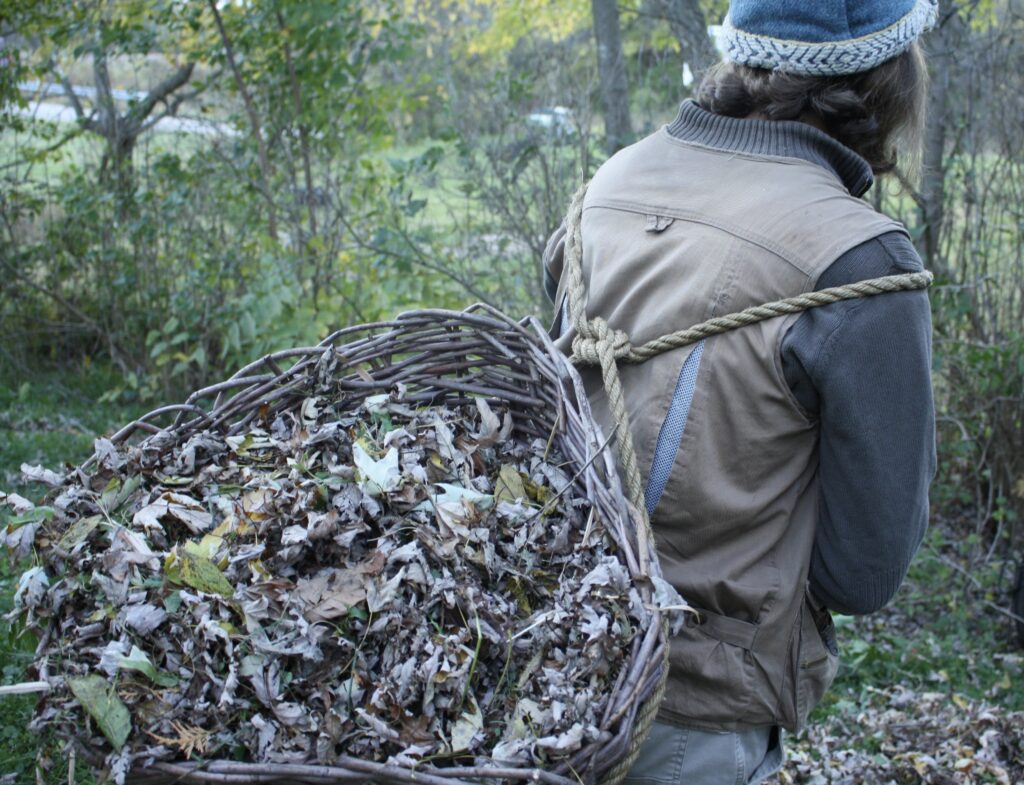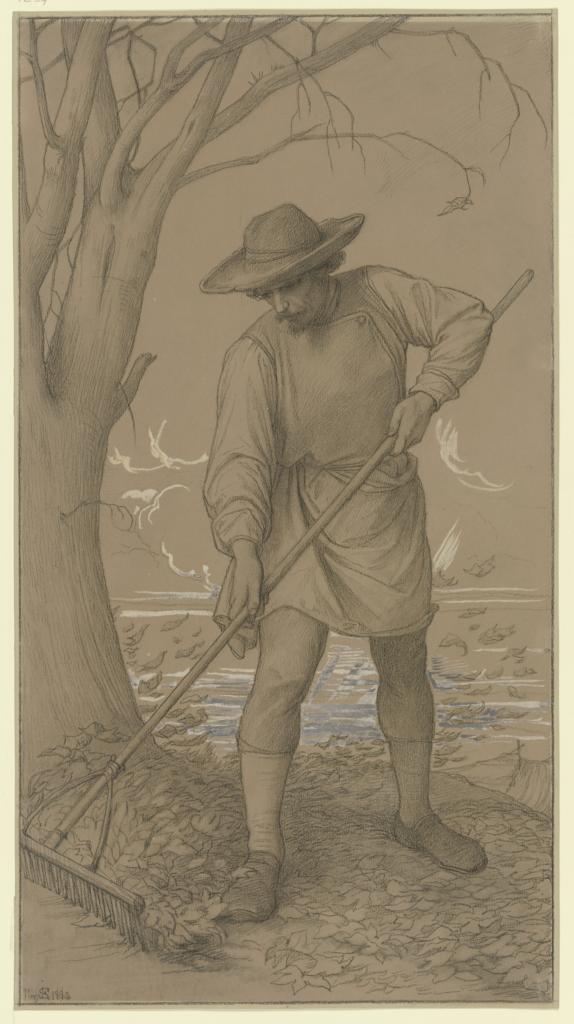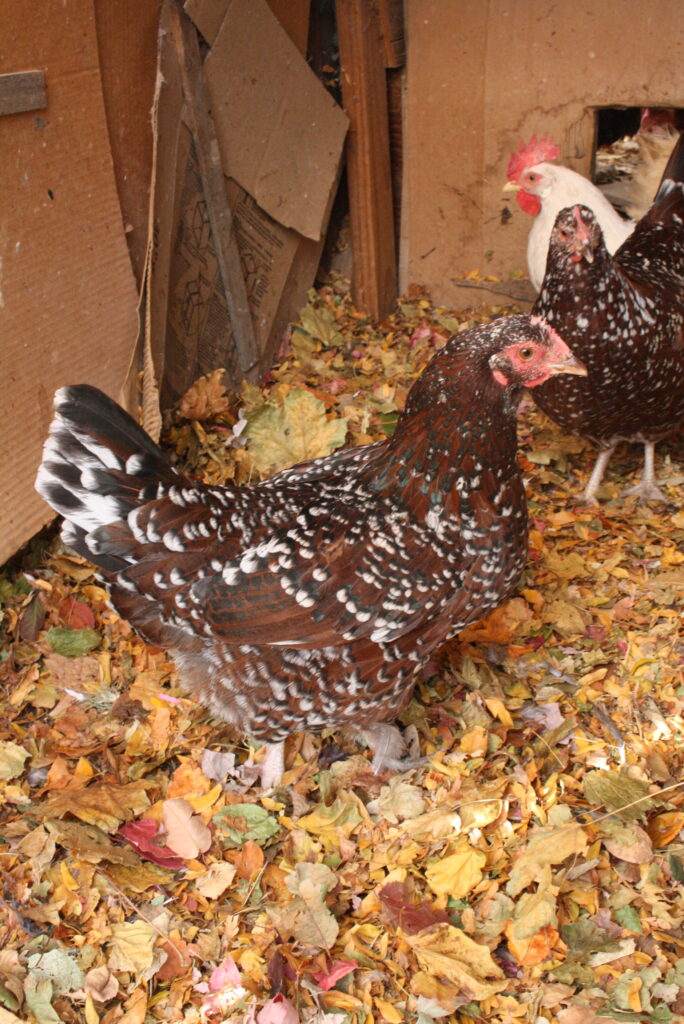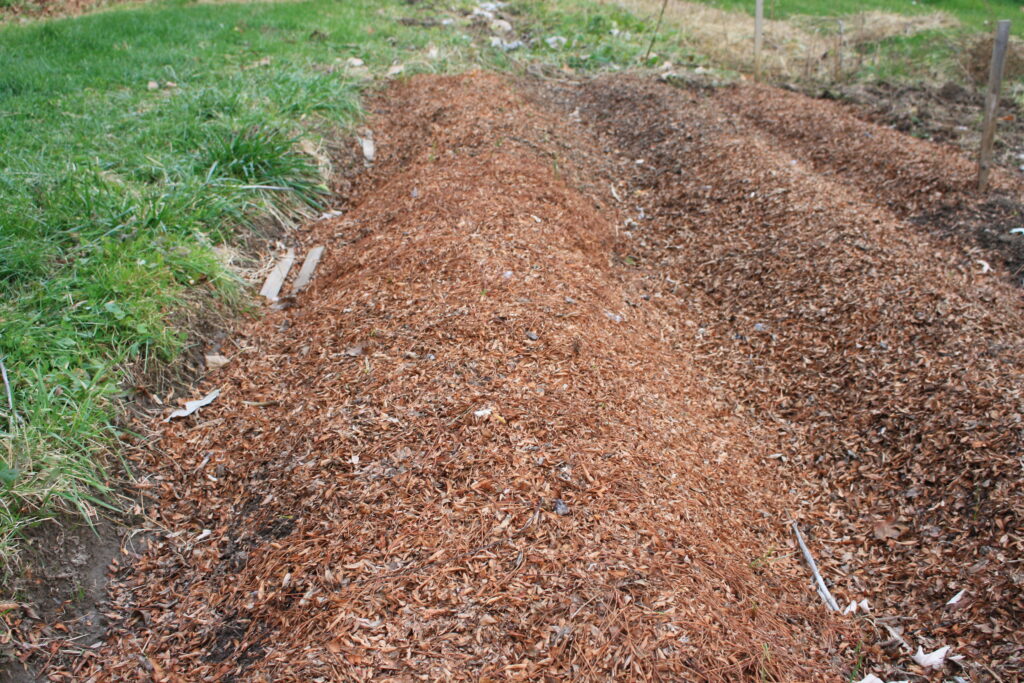Leaf litter nowadays is considered the seasonal chore of Autumn. But don’t just throw that leaf pile over the fence line! This is yet another free resource of abundant, organic material. It was an opportunity not missed by our agrarian forebears. There is no reason for us to pass up the opportunity as well!

The Forgotten Peasant Practice
In the forested areas of Northern and Central Europe, there was once the common practice of “forest litter raking”. Every Autumn, the farmer folk would literally go out and rake up the leaf litter in the woods. Why?
Primarily, the abundant dry leaves were stored and used for livestock bedding material in the barn throughout the Winter. The resulting rich mixture of manure and leaves was then spread on the fields in the Spring.
Not only that, they also filled their own mattresses with leaves! I mean, hey, why not?
In places like the Swiss Alps, forest litter raking was so intensely common, that it affected the rate of tree growth in the woods. After all, the fallen leaves of Autumn are a tree’s natural fertilizer. By regularly removing the leaves, the trees growth would start to slow down. In some places apparently, the government curtailed the practice because it was starting to affect the forestry industry!

Fast-forward to the 21st century. Leaf litter raking is not even in living memory anymore. But whether you live in town or out on the land, here remains a resource–readily available and oh-so untapped. Here is how I have harnessed it for my own domain:
Leaf litter for Animal Bedding
Rather than buying straw bales for animal bedding on your tiny homestead, why not use dead leaves? I have used them for several years in my chicken coop. Not only that, I have also used leaves in my chick brooder. I felt silly buying the wood shavings for the brooder, so I tried leaves instead. They worked just fine.

Fertilize your Soil!
Naturally, after you have used several layers to catch the droppings, you have some prime fertilizer that is just waiting to be returned to the soil. Best advantage to leaf litter animal bedding? No weed seeds in it!
Boost your Compost Pile
Perhaps you don’t have any animals (yet). Well, you certainly should have a compost pile! Adding leaves is a great “brown” substance that will help soak up the wetter material. If you turn it periodically, you’ll soon have rick dark earth.
Leaf Mold
This is the leaf-mulch that has begun to rot down. It is dark and moist, and starting to resemble dirt. This is the stuff you want to directly mix in with your soil.
Natural Mulch
Save some time in weeding! Mulch your garden beds before the Winter. They will be already for you in the Spring with little room for weeds to grow.
When you plant your garlic in October, spread a couple inches of leaf mulch on it. You can practically forget about it till midsummer.

Shredding your Leaves
This helps the leaves break down faster. It also prevents matting. Hey, I’m not against using modern tools to do this. Here are some methods to do so:
- Lawn mower with a bagger
- String trimmer: Shred the leaves in a large rain barrel
- Shred ‘n Vac or wood chipper
Leaves to Avoid
If you live in an area with Black Walnut, be forewarned. The leaves and husks from these trees have a natural herbicide called “juglone”. This chemical can inhibit plant growth. In other words, best to not use black walnut leaves in your garden.
Storing your Leaf Litter
Store them in a dry place, preferably off the ground with some air-flow. I store them in landscape bags in the corner of my work-shop.
I have found that utilizing leaf litter for your homestead operations is a most sensible thing to do. It is no surprise this fact our thrifty ancestors knew about it. Don’t miss out on this free resource! ~ Nathanael


Leave a Reply